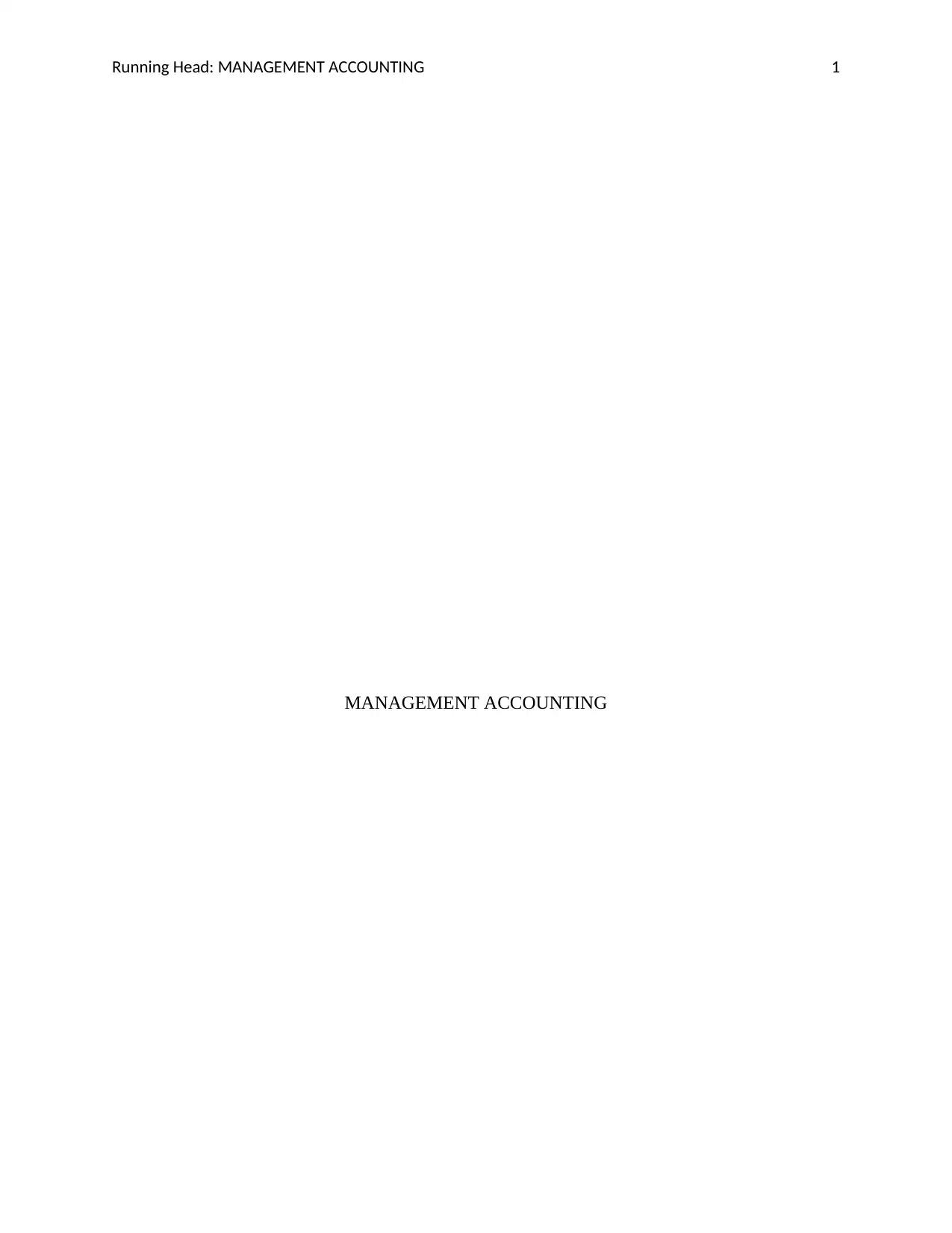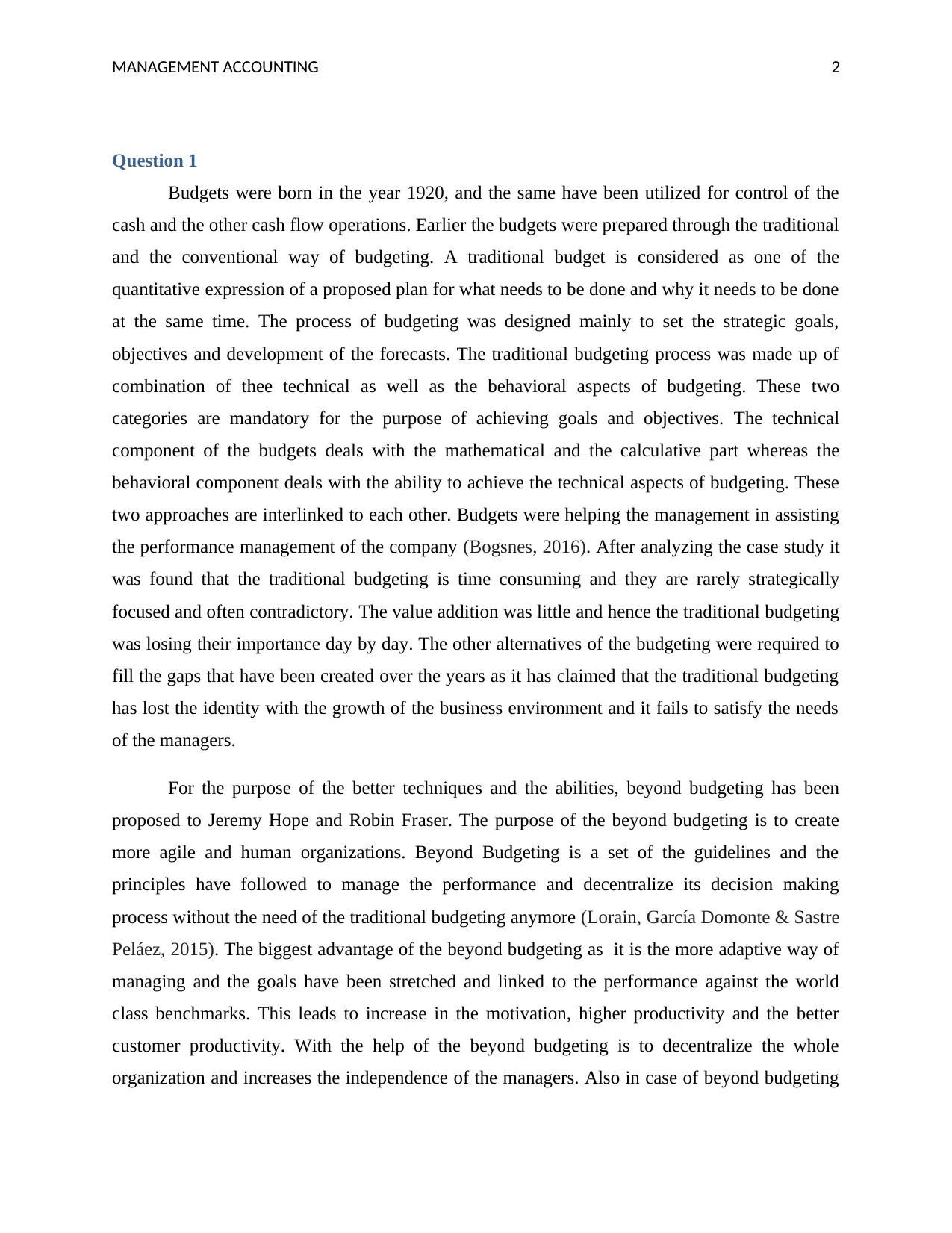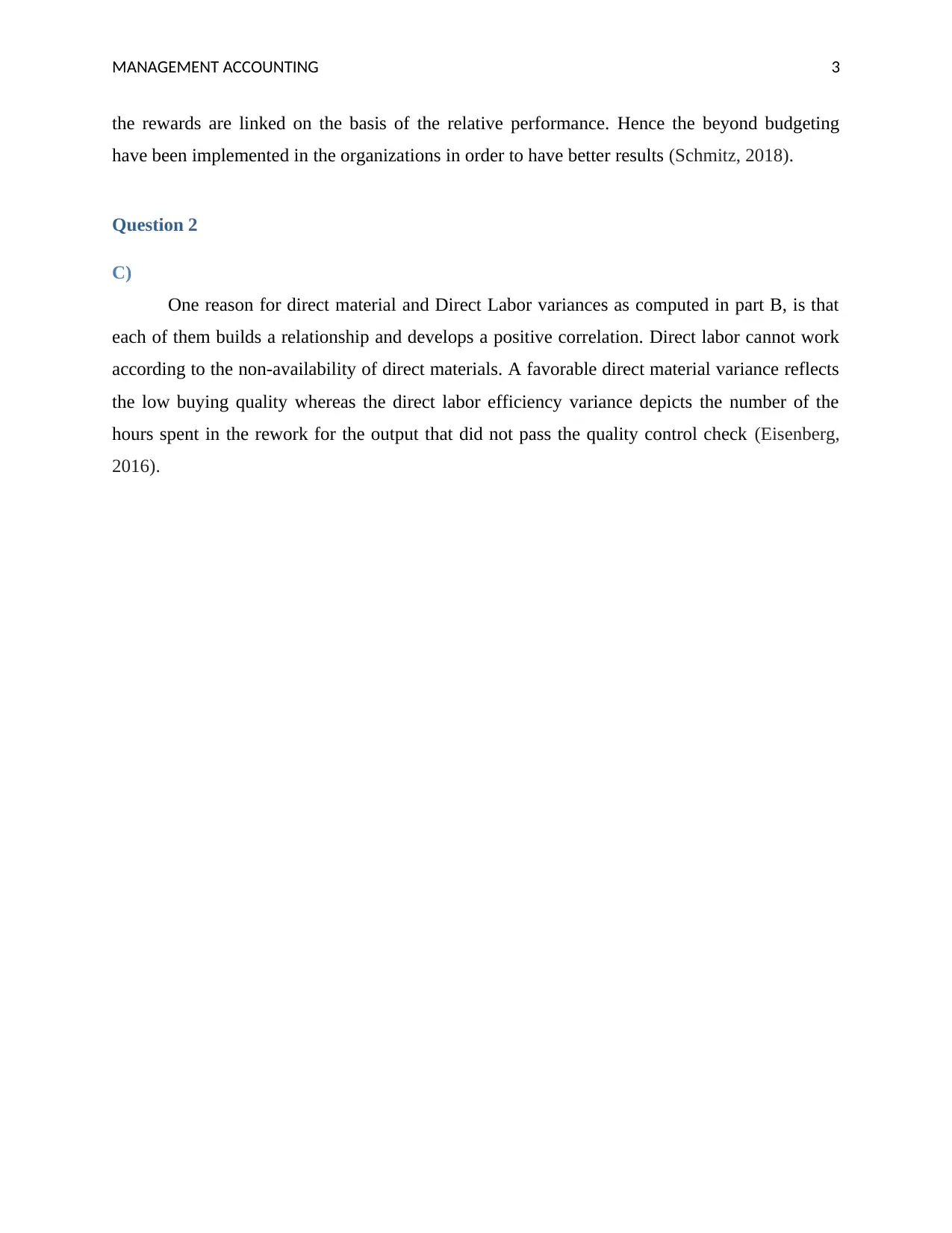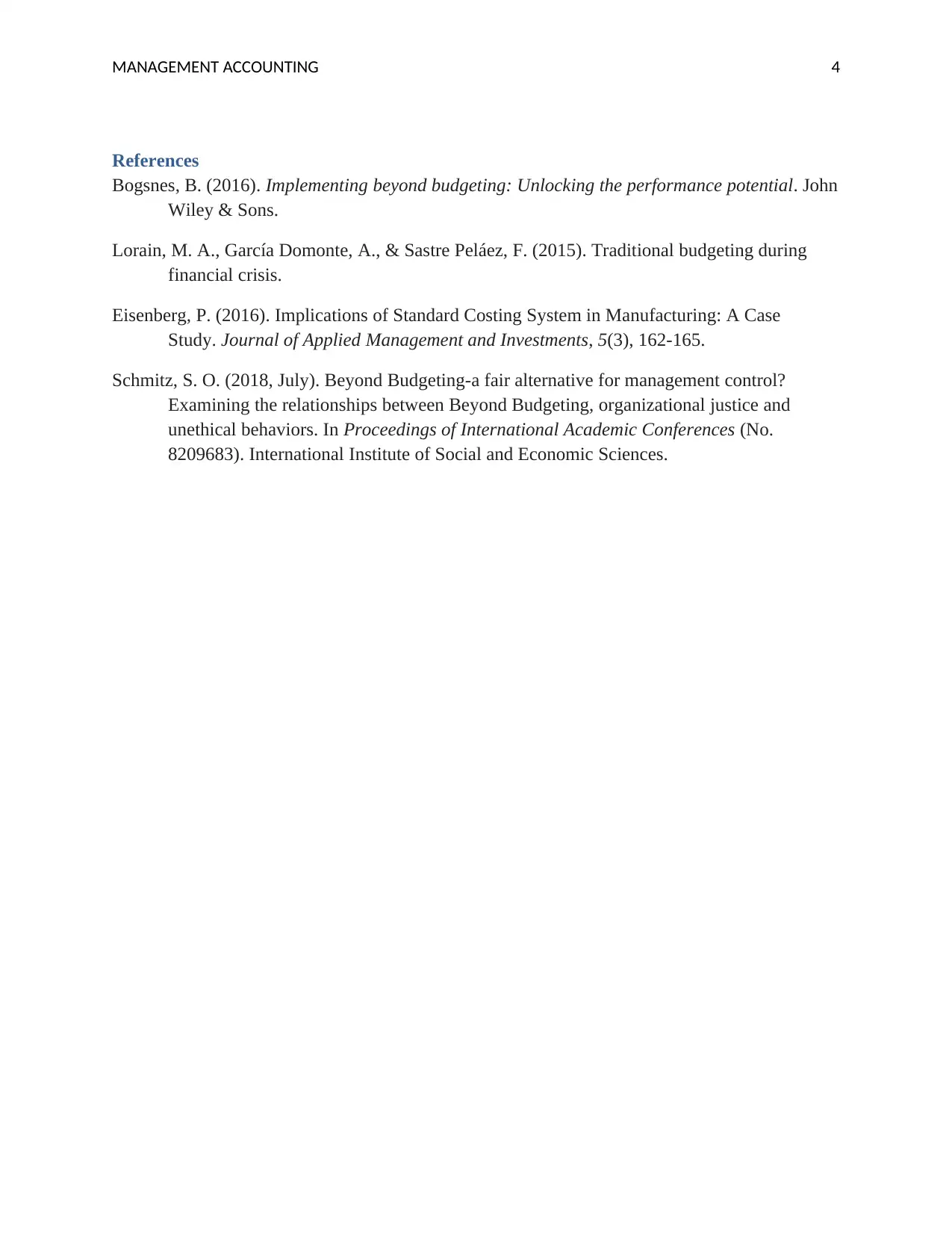Management Accounting Report: Budgeting, Variances, and Beyond
VerifiedAdded on 2023/01/23
|4
|711
|100
Report
AI Summary
This report delves into the core concepts of management accounting, commencing with an examination of traditional budgeting methods, their limitations, and the emergence of 'beyond budgeting' as a more agile and adaptive approach. It highlights the benefits of beyond budgeting, such as decentralized decision-making and performance-linked rewards. The report then proceeds to a case study involving BNI C Ltd, analyzing direct material and direct labor variances. The analysis includes computing revised standards, calculating variances, and preparing an operating statement to reconcile the actual results with the budgeted figures. The solution addresses material and labor variances, incorporating adjustments for normal losses and idle time allowances, providing a comprehensive understanding of cost accounting and variance analysis.
1 out of 4











![[object Object]](/_next/static/media/star-bottom.7253800d.svg)